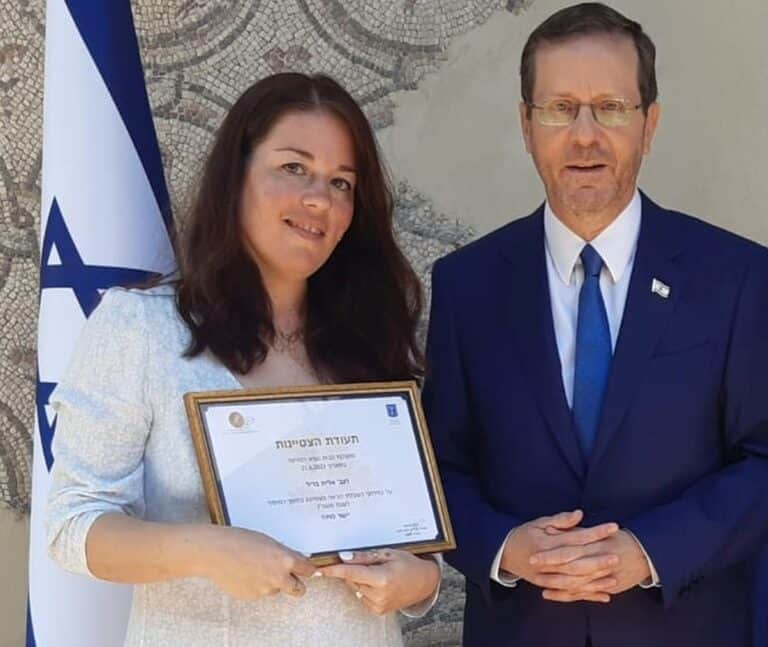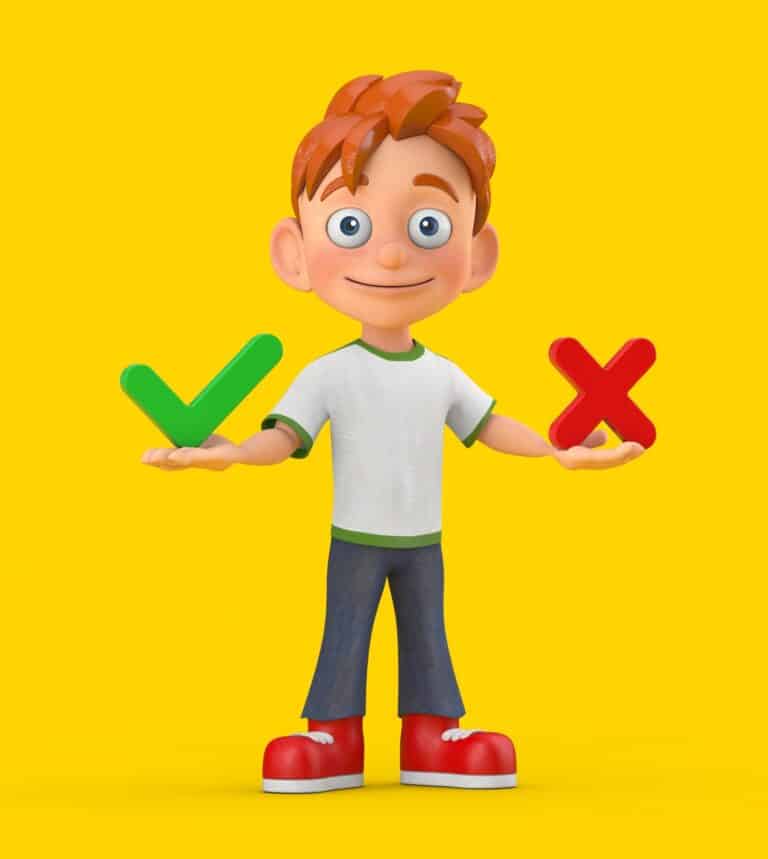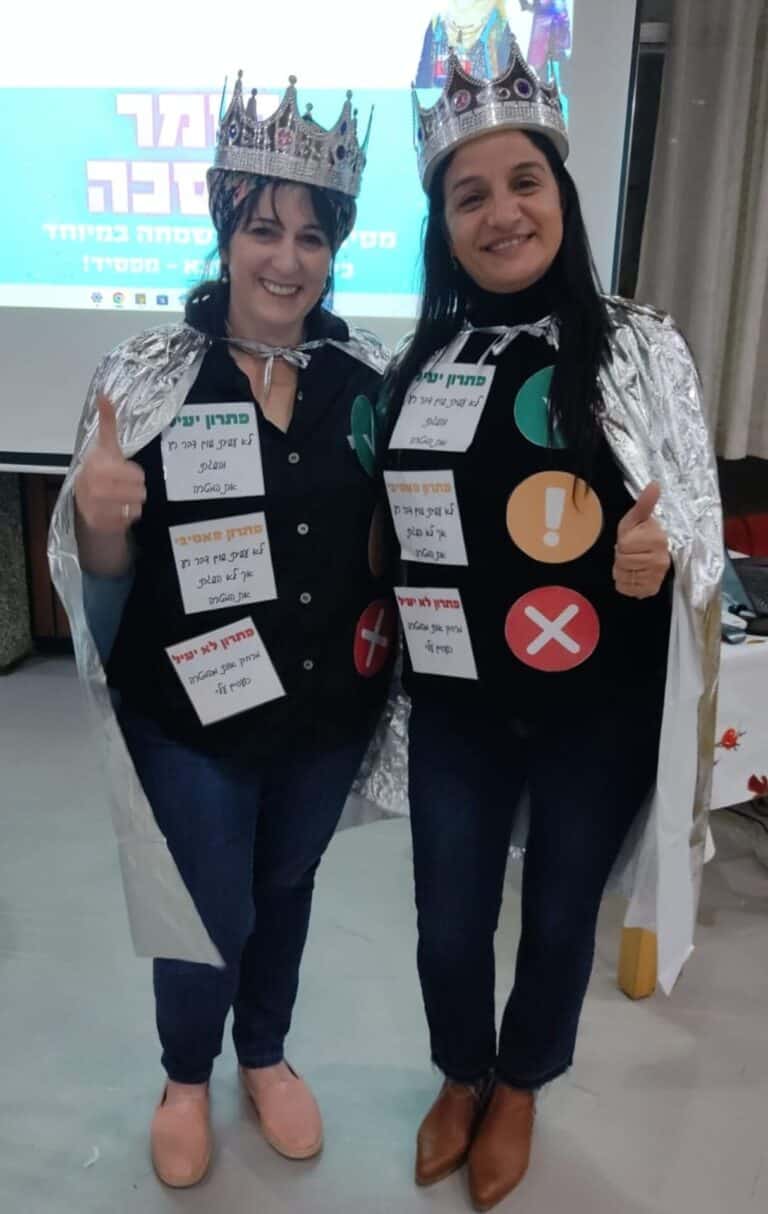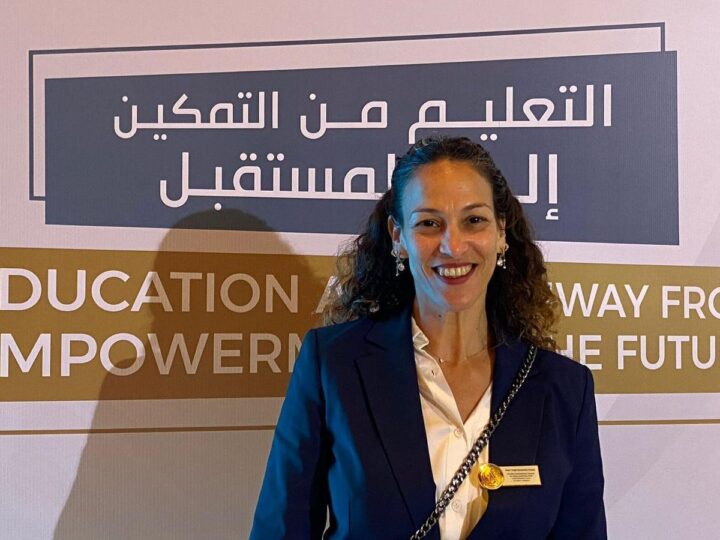Alit Brill’s little boy complained that a classmate was teasing him for being short.
Instead of calling the teaser’s mother, Brill helped her son devise solutions he could implement himself. Perhaps he could respond, “Maybe I’m small but I’m smart,” or defuse the insult by laughing.
“He picked the solution that suited him, and he used it,” says Brill.
“Children always go to the adult to help them and I want to change that. I want to teach them to at least try to solve the problem themselves instead of tantruming or yelling.”
A behavioral analyst, Brill is now blazing a new trail in problem-solving for kids. Her unique problem-solving intervention model, “King of Solutions,” is the topic of her doctoral thesis at Ariel University.
King of Solutions was featured in the Teaching Exceptional Children journal in January 2022 and highlighted at two international behavioral analyst community conferences.
She recently won a medal from the Israeli president and the Athena Fund recognizing her method’s success with children with attention disorders, learning disabilities, autism and other special needs. She uses it with neurotypical children, too.
“A problem is a problem; it doesn’t matter what it is or where. There is a gap between what I want and what I get, or between where I am now and where I want to be, and I don’t know how to get what I want or to avoid something I don’t want.”
Brill notes that poor problem-solving skills in childhood carry over to adulthood, correlating to symptoms of depression later in life.
Red, yellow, green
“For the teacher or parent, a bad solution is where the child doesn’t behave and a good solution is where the child is acting as expected. But that’s not how children look at it,” Brill tells ISRAEL21c.
“King of Solutions is an effective methodology that makes both sides feel optimistic about achieving their goals.”

The key is seeing the problem from the child’s perspective and practicing possible solutions — color-coded red, yellow and green — guided by the methodology.
“A red solution is not just wrong; it will distance you further from your goal and you will probably get punished,” she explains.
“Yellow is passive, where you don’t do anything except maybe leave or cry, and again you don’t get what you want. A green solution achieves the child’s goal and is socially appropriate.”
With training, children become empowered to master this process and choose “green” solutions on their own.
Brill says, “You should see that smile of a child who solved his own problem!”
What do you want?
A classic problem is when a child resists doing a classroom assignment.
According to the King of Solutions model, the adult first asks, “What do you want to achieve? I will help you get what you want.”
“They’re not used to hearing this question, and it immediately diminishes resistance,” says Brill.
“At first, they always tell me ‘I want to complete the assignment.’ And I say, ‘No, you don’t. What do you really want?’ And they say, ‘I don’t want to do it.’ Then I ask them, ‘Do you want it to be easier?’ Once we identify the child’s goals we can come up with the red, yellow and green solutions and I can prompt him to implement the green ones.”

A red solution may be ripping up the assignment or having a tantrum. “It’s not worthwhile because the problem remains and even gets bigger because there will be a punishment,” says Brill.
A yellow solution, passively leaving the assignment undone, doesn’t achieve anything because eventually the teacher will ask the child to complete it.

“So I prompt the child, ‘Maybe you can negotiate with the teacher, and say, “It’s very hard for me. Can I do just part of it?” Or maybe you can ask to use a tool, like a calculator if it’s a math assignment. Maybe you can ask for extra time to complete the assignment.’ There can be several green solutions. We choose one and encourage the child to use it.”
If the teacher or parent respects the terms of the solution, she adds, the child often surprises them.
“One child got permission to use a calculator and used it to answer the first few questions. But then he continued without it. I was shocked. The teacher was shocked. This is the power of looking at a problem from the child’s point of view and reassuring the child it can be done.”
Sibling spats
Brill says parents don’t realize how often they solve problems for their kids. King of Solutions teaches kids to take that responsibility.
Let’s say two siblings want the same box of LEGOs. The parent can avoid fighting by giving half the blocks to each child, but this doesn’t teach the kids anything.
Brill teaches the parent to say: “I’m going to take out the LEGOs. I know you both like them so maybe you’ll have a problem. Let’s think of a green solution in advance so you’ll both have what you want.”
If the children suggest taking turns, the parent might say, “Okay, but it’s hard to wait for a turn and then we’ll have a new problem. What can we do instead?”
The idea is for the children to work out a green solution, perhaps dividing the blocks evenly, on their own or with the parent’s prompting.
“You put on problem-solving glasses and see it from their point of view, and suggest solutions that are easy to implement in the future if the teacher or parent is busy,” says Brill. “Otherwise, the child will choose a yellow or red solution that doesn’t solve the problem.”
Any child, any language
The germ of King of Solutions was planted in Brill’s mind 10 years ago, when she was tutoring a first-grader with high-functioning autism. Any problem would set him off. “If he forgot his notebook, he’d call his mother screaming and crying.”
Brill knew that the standard approach to problem-solving, involving guided questions and role playing, wouldn’t work.
“When a child is in distress, he doesn’t have time to implement a long process, especially if he has difficulty with executive functions such as planning and impulsivity,” she says.
Brill created her method for that child and then used it with other children on the autism spectrum, and finally brought it to mainstream classrooms.
She has developed age-appropriate materials – including story videos and games — to teach the King of Solutions to preschoolers and elementary school children. She offers online and in-person courses and workshops for teachers and therapists.
For parents, she developed a short digital course. A Facebook group facilitates interaction and support for all adults using the King of Solutions.
The materials are in Hebrew, but Brill says the methodology would work in any language and any country.
“Problem-solving starts with personal responsibility,” says Brill.
“Teachers and parents can learn how to prompt solutions so the child will learn how to do it on their own when the next problem arises. We all have problems to solve all the time, throughout our lives.”
When she finishes her doctorate, under the guidance of Prof. Esther Ben-Itzchak and Dr. Gil Zuckerman of the Bruckner Autism Research Center at Ariel University, Brill plans to publish her data and translate it into English to make the King of Solutions more widely available to researchers, teachers, therapists and parents everywhere.
For further information, email alitbril@gmail.com.

















